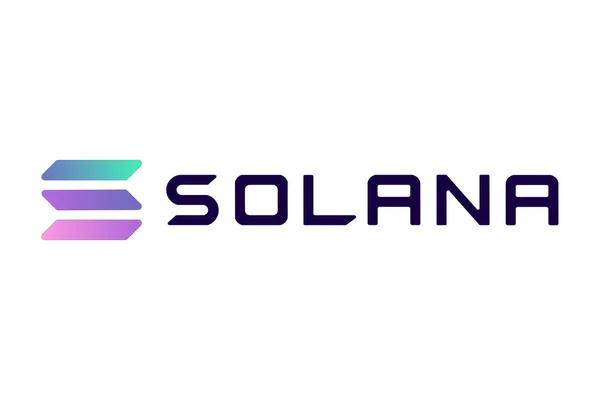Introduction:
Blockchain technology has taken the world by storm, revolutionizing industries and transforming the way we transact and interact with digital assets. Among the many blockchain platforms that have emerged, Solana stands out as a true game-changer. With its unparalleled scalability, lightning-fast transaction speeds, and robust architecture, Solana is making waves in the blockchain space. In this article, we will unravel the potential of Solana’s revolutionary technology, exploring its architecture, comparing it to Ethereum, and delving into its future outlook.
The Rise of Solana: A Revolutionary Blockchain Technology
Solana, founded in 2017 by Anatoly Yakovenko, is a high-performance blockchain platform that aims to address the scalability challenges faced by traditional blockchains. It introduces a revolutionary technology that combines elements of traditional Proof of Stake (PoS) and Proof of History (PoH) consensus mechanisms, resulting in unprecedented transaction speeds and scalability. Solana’s rise to prominence has been swift, attracting attention from developers, investors, and enterprises alike, all drawn to its potential to transform various industries.
Understanding Solana’s Architecture: Keys to its Success
At the core of Solana’s architecture lies its unique approach to consensus and scalability. Solana utilizes a combination of Proof of History (PoH) and Proof of Stake (PoS) consensus mechanisms. PoH establishes a historical record of all events on the blockchain, enabling validators to efficiently process transactions without the need for repeated validation. Meanwhile, PoS ensures the security and decentralization of the network. Solana’s architecture also features a unique data structure called Tower BFT, which enhances network stability and eliminates the potential for forks.
Solana vs. Ethereum: Analyzing the Key Differences
While both Solana and Ethereum are blockchain platforms, they differ significantly in terms of architecture, scalability, and transaction speeds. Ethereum, with its focus on smart contracts and decentralized applications (DApps), has faced challenges in scaling to meet growing demand. On the other hand, Solana’s architecture allows it to process thousands of transactions per second, making it highly scalable. Ethereum’s transition from Proof of Work (PoW) to Proof of Stake (PoS) is ongoing, whereas Solana has already implemented a PoS consensus model, resulting in faster and cheaper transactions.
Scalability on Steroids: Solana’s Breakthrough Consensus
One of Solana’s most impressive features is its scalability. Traditional blockchains often struggle to handle large volumes of transactions, leading to network congestion and high fees. Solana, however, has shattered these limitations by achieving unparalleled transaction speeds. With its unique consensus mechanism, Solana can process over 65,000 transactions per second (TPS), far surpassing the capabilities of other popular blockchains. This breakthrough in scalability opens the doors to a myriad of possibilities for Solana, from decentralized finance (DeFi) to gaming and beyond.

Unleashing the Power of Smart Contracts with Solana
Smart contracts have revolutionized the world of finance, enabling the automation of complex transactions and the creation of decentralized applications. Solana empowers developers to harness the power of smart contracts through its vast ecosystem and developer-friendly tools. With Solana, developers can build and deploy robust and secure smart contracts, taking advantage of its low transaction fees, high throughput, and extensive interoperability with other platforms.
Solana’s Future Outlook: Disrupting the Blockchain Landscape
As Solana continues to gain traction, its future outlook appears promising. Its scalability and high transaction speeds position it as a potential disruptor in various industries, from finance and gaming to supply chain and healthcare. Moreover, Solana’s commitment to fostering developer growth and its vibrant ecosystem bode well for its long-term success. As more projects and enterprises recognize the power of Solana’s technology, the platform is poised to make a significant impact on the blockchain landscape.
Comparison Table: Solana vs. Ethereum
| Feature | Solana | Ethereum |
|---|---|---|
| Consensus Mechanism | Proof of History (PoH) + Proof of Stake (PoS) | Proof of Work (PoW) + Transitioning to Proof of Stake (PoS) |
| Transaction Speed | Over 65,000 TPS | Around 15 TPS |
| Scalability | Highly scalable | Facing scalability challenges |
| Smart Contract Support | Robust ecosystem and developer-friendly tools | Well-established ecosystem and widespread adoption |
| Transaction Fees | Low fees | High fees, especially during network congestion |
In conclusion, Solana’s revolutionary blockchain technology is set to redefine the possibilities of decentralized applications and smart contracts. With its unique architecture, scalability on steroids, and commitment to developer growth, Solana is poised to disrupt the blockchain landscape. As the world embraces the power of blockchain, Solana stands out as a true game-changer, offering unparalleled transaction speeds, low fees, and a vibrant ecosystem. Whether it’s in finance, gaming, or other industries, Solana is ready to unlock the potential of a revolutionary technology.
